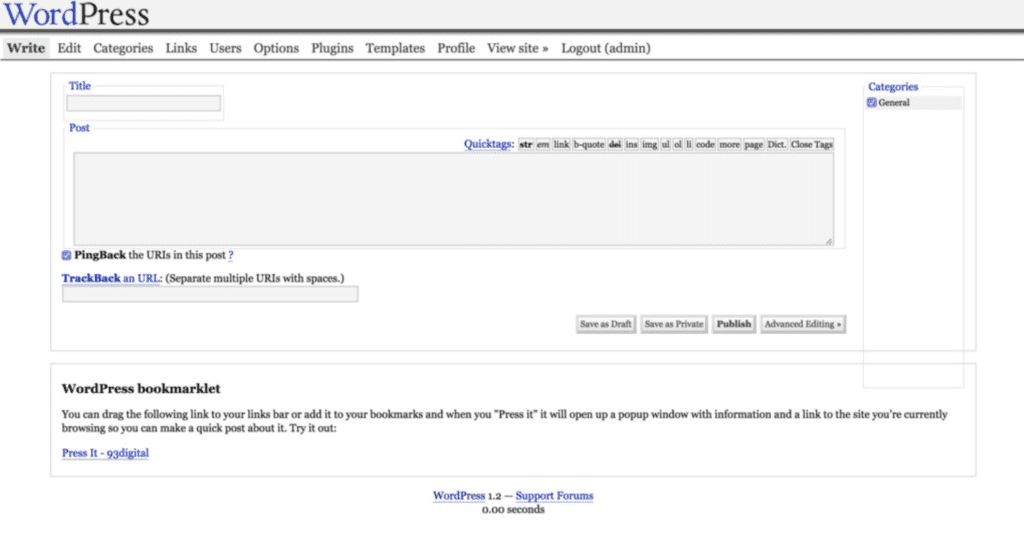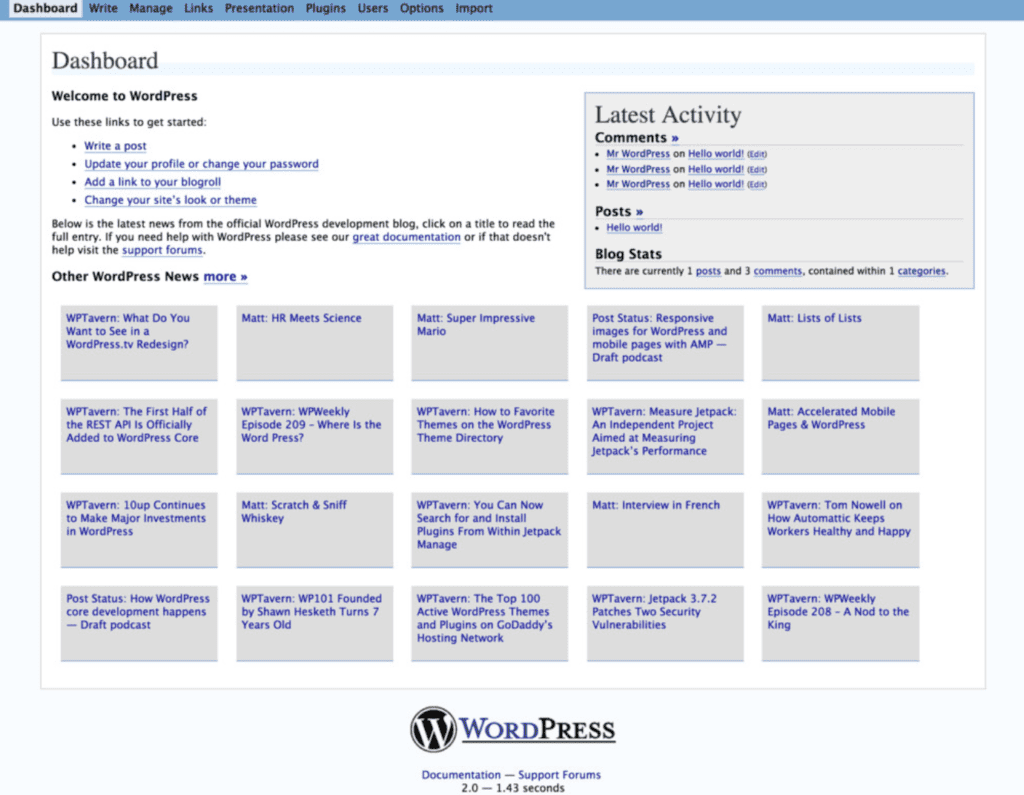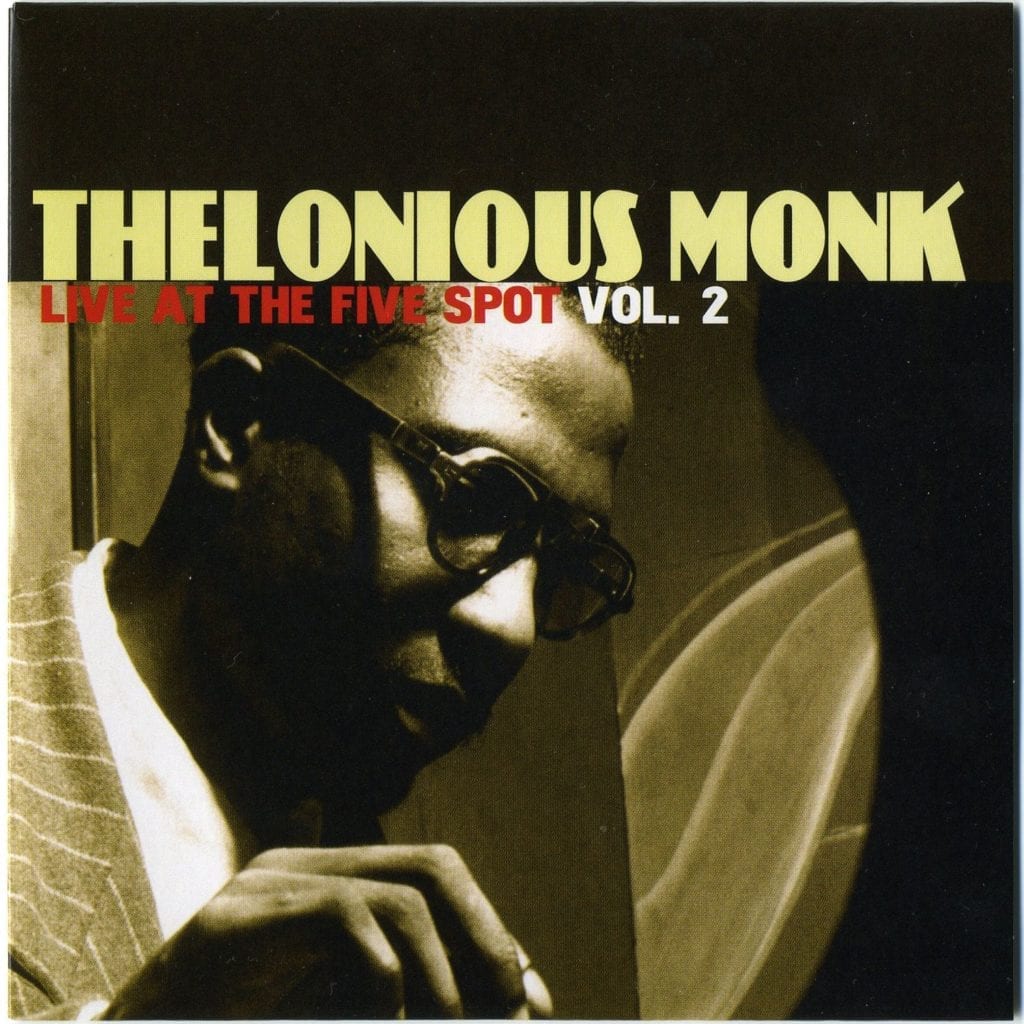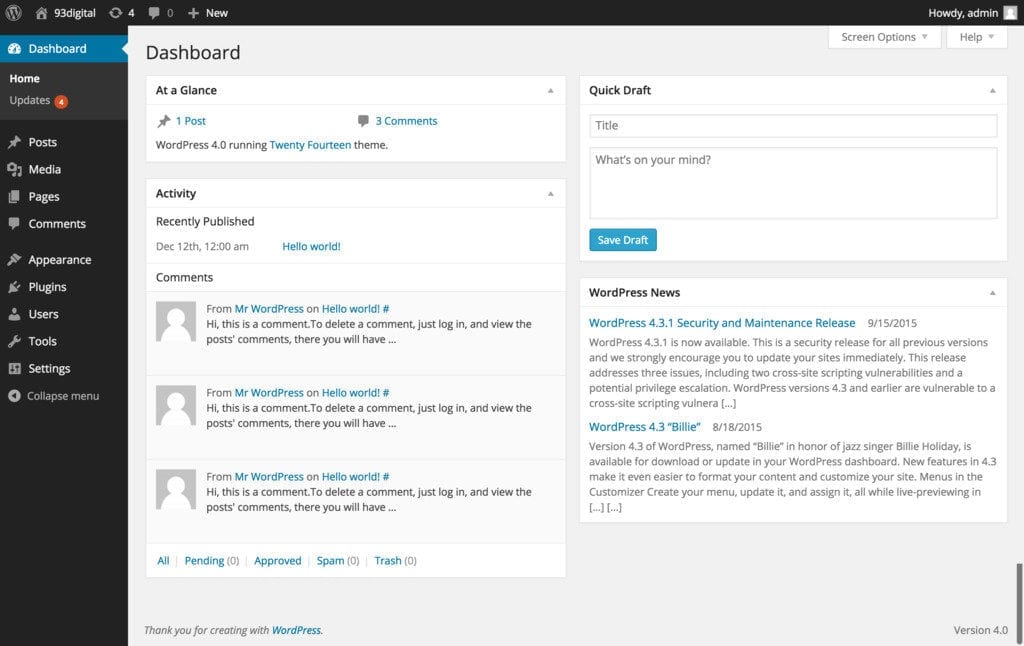
Happy 15th Birthday WordPress!
This Sunday, May 27, will mark 15 years since the first release of WordPress. That’s right, it’s been 15 years since a 19-year-old freshman, Matt Mullenweg, and British web developer, Mike Little launched the initial version of what would become the Web’s most popular Content Management System (CMS).
Late May 2003 was undoubtedly a simpler time. 50 Cent was dominating the charts with “In Da Club”, the San Antonio Spurs were getting ready to face the New Jersey Nets in the NBA Finals and Finding Nemo was selling out movie theaters across the country.
Feel old yet? If it’s any consolation, the history of WordPress from that point on has been marked by continuous innovation and improvement to the platform, thanks in large part to the dedicated community of WordPress developers and engineers who work constantly to improve it.
As in year’s past, this year’s anniversary will be celebrated in numerous ways, with WordPress communities hosting parties around the world and more 15th-anniversary swag than the Oscars.
Celebrating or not, most WordPress users will agree that the last 15 years have been full of positive developments. Over that time, WordPress has matured from a simple blogging platform to powering some of the most complex and heavily trafficked sites on the Internet. Check out this great “time machine” for a visual, chronological look at the different iterations WordPress has seen over the years.
Throughout its history, WordPress has also had countless releases, each filled with varying degrees of updates and new features. There have been more than 30 major WordPress releases since 2003, so to spare you the time of going through all of them, here are some of the highlights:
- 1.2 – released in May 2004, WordPress 1.2, or Mingus (every main release is named after a jazz musician), saw the introduction of plugin architecture, which allowed users and developers to build out the platform’s functionality by writing plugins and sharing them with the wider community. Plugins remain a bedrock feature of WordPress to this day.

- 1.5 – released in February 2005, version 1.5, named after jazz pianist Billy Strayhorn, saw the introduction of pages and a new theme system to the WordPress platform, which allowed users to change themes in one place and see the change everywhere, immediately. This might seem ubiquitous now, but in 2004, it was a game changer.
- 2.0 – released in December 2005, “Duke” or WordPress 2.0, saw a complete overhaul of the admin dashboard and for the first time, allowed users to perform a number of admin tasks without leaving the post editor. This was also the first version of WordPress that came with the Akismet anti-spam plugin pre-installed.

- 2.5 – released in March 2008, version 2.5, named for saxophonist Michael Brecker, saw a major overhaul to the existing WordPress dashboard, as well as the introduction of dashboard widgets, multi-file upload and extended search. Improvements were also made to the post editor and the plugin system.
- 3.0 – released in June 2010, “Thelonious” saw WordPress take major strides towards bridging the gap from a simple blogging platform to a full-fledged CMS. This version added new theme APIs, merged WordPress and WordPress MU (to create multisite functionality), and introduced the idea of a new, default theme that would change every year.

- 3.8 – released in December 2013, “Parker” (for Charlie) introduced MP6, which was the first responsive WordPress admin interface. A the time, it was aimed to provide a better experience for users on any device or screen size.
- 4.0 – released in September 2014, “Benny” made a number of major improvements to WordPress core including improved media management and embeds, an improved writing interface, the ability to easily change languages, a new theme customizer and compatibility with PHP 5.5 and MySQL 5.6.

- 4.9 – released in November 2017, version 4.9, named for bandleader Billy Tipton, is the most recent major update to WordPress and includes an improved theme customizer, a new gallery widget and updated text and video widgets.
The next major update slated for release will be WordPress 5.0, which has yet to be named but is expected to include a major update: the new Gutenberg editor. In the meantime, check out the playlist below, which features music from every musician a WordPress update has been named for.
At WP Engine, we’ve followed the evolution of WordPress since our founding in 2010, and we’ve enjoyed watching its progress and rapid adoption around the globe. Over time, we’ve rolled out features that extend WordPress and help build a WordPress hosting platform that is enterprise grade and works at scale for all our 80,000-plus global customers.
What will the next 15 years hold for WordPress? It’s hard to tell, but if history is any guide, stronger personalization, greater creativity with headless and the REST API, increased adoption and an even larger share of the Web seem to be safe bets. In the meantime, it’s been an amazing 15 years, and from WP Engine and the entire WordPress community, here’s to many happy returns!
Happy Birthday, WordPress!
As WordPress continues to mature, what types of changes or updates would you like to see made? What do you look forward to the most? Leave a comment below.
Start the conversation.